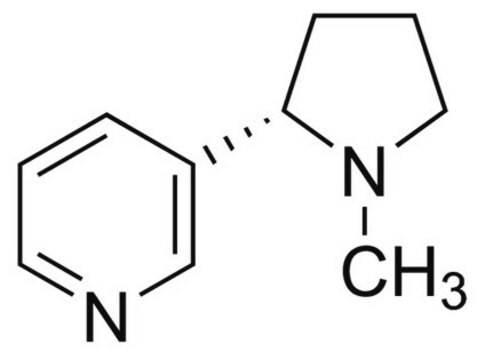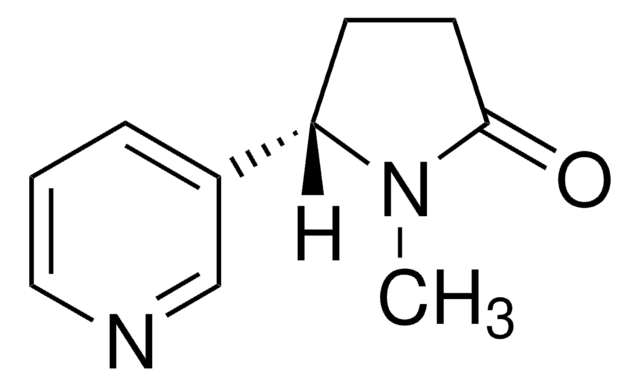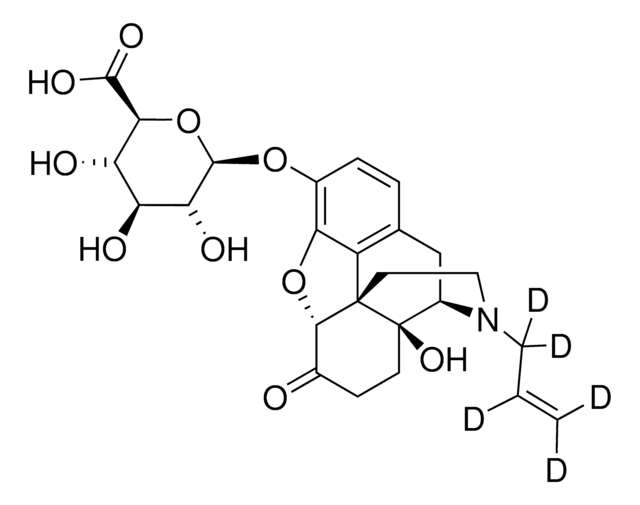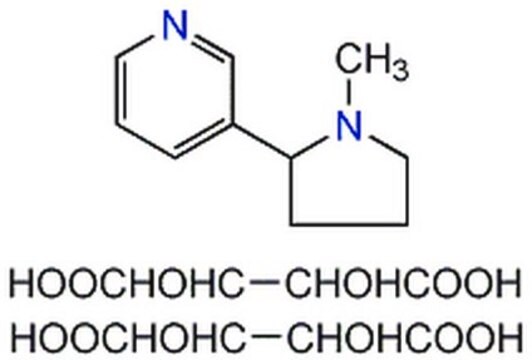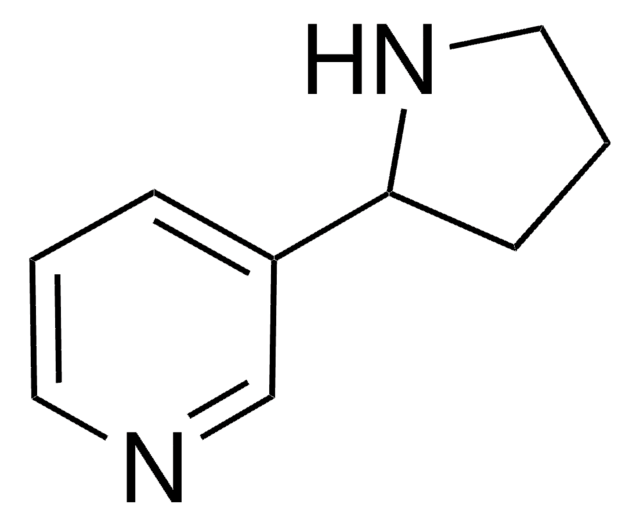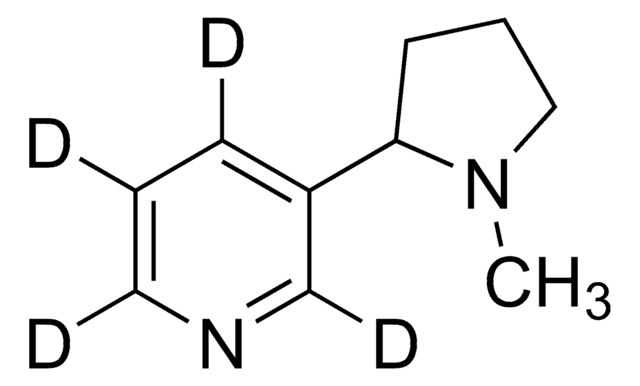N3876
(−)-Nicotine
≥99% (GC), liquid
Sinonimo/i:
(−)-1-Methyl-2-(3-pyridyl)pyrrolidine, (S)-3-(1-Methyl-2-pyrrolidinyl)pyridine
About This Item
Prodotti consigliati
Livello qualitativo
Saggio
≥99% (GC)
Forma fisica
liquid
Attività ottica
[α]20/D −169°(lit.)
Colore
yellow
Indice di rifrazione
n20/D 1.5265 (lit.)
Solubilità
ethanol: 50 mg/mL
Densità
1.010 g/mL at 20 °C (lit.)
Stringa SMILE
CN1CCC[C@H]1c2cccnc2
InChI
1S/C10H14N2/c1-12-7-3-5-10(12)9-4-2-6-11-8-9/h2,4,6,8,10H,3,5,7H2,1H3/t10-/m0/s1
SNICXCGAKADSCV-JTQLQIEISA-N
Informazioni sul gene
human ... CHRNA2(1135) , CHRNA3(1136) , CHRNA4(1137) , CHRNB2(1141) , CHRNB4(1143) , CYP2A6(1548) , KCNH1(3756)
mouse ... Chrna7(11441) , Chrnb1(11443)
rat ... Chrna1(79557) , Chrna2(170945) , Chrna4(25590) , Chrna7(25302) , Chrnb2(54239) , Chrnb4(25103)
Cerchi prodotti simili? Visita Guida al confronto tra prodotti
Descrizione generale
Applicazioni
- to stimulate neutrophils in extracellular DNA fluorescence assay and in immunostaining of neutrophils
- to study the effects of chronic neonatal nicotine exposure on nicotinic acetylcholine receptor (nAChR) binding, cell death and morphology in hippocampus and cerebellum
- in an in vitro study to evaluate the effect of root exposure to nicotine or cotinine on the morphology and density of fibroblasts
Azioni biochim/fisiol
Nota sulla preparazione
Avvertenze
Danger
Indicazioni di pericolo
Classi di pericolo
Acute Tox. 1 Oral - Acute Tox. 2 Dermal - Acute Tox. 2 Inhalation - Aquatic Chronic 2 - Eye Dam. 1 - Skin Irrit. 2
Codice della classe di stoccaggio
6.1A - Combustible acute toxic Cat. 1 and 2 / very toxic hazardous materials
Classe di pericolosità dell'acqua (WGK)
WGK 3
Punto d’infiammabilità (°F)
213.8 °F - closed cup
Punto d’infiammabilità (°C)
101 °C - closed cup
Dispositivi di protezione individuale
Eyeshields, Faceshields, Gloves, type ABEK (EN14387) respirator filter
Certificati d'analisi (COA)
Cerca il Certificati d'analisi (COA) digitando il numero di lotto/batch corrispondente. I numeri di lotto o di batch sono stampati sull'etichetta dei prodotti dopo la parola ‘Lotto’ o ‘Batch’.
Possiedi già questo prodotto?
I documenti relativi ai prodotti acquistati recentemente sono disponibili nell’Archivio dei documenti.
I clienti hanno visto anche
Il team dei nostri ricercatori vanta grande esperienza in tutte le aree della ricerca quali Life Science, scienza dei materiali, sintesi chimica, cromatografia, discipline analitiche, ecc..
Contatta l'Assistenza Tecnica.
